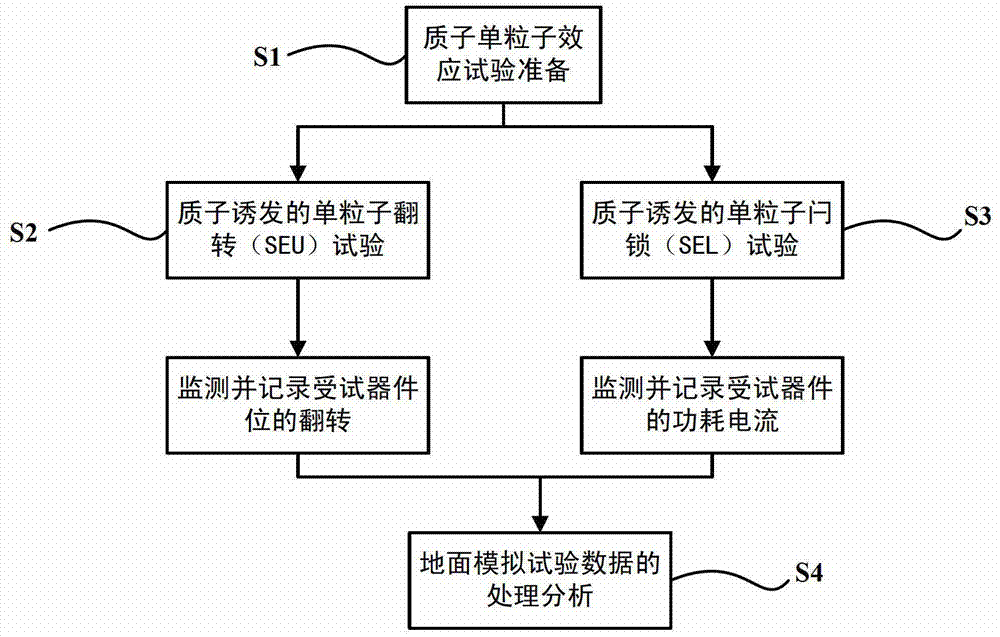Method for testing proton/single event effect resisting capacity of device
A single-event effect, proton technology, applied in electronic circuit testing, non-contact circuit testing, etc., can solve the problem of inaccurate and sensitive resistance to proton single-event effect, and achieve the effect of convenient processing
- Summary
- Abstract
- Description
- Claims
- Application Information
AI Technical Summary
Problems solved by technology
Method used
Image
Examples
Embodiment Construction
[0042] The method for testing the anti-proton single event effect capability of a device proposed by the present invention is described below with reference to the accompanying drawings and examples.
[0043] like figure 1 As shown, the proton single event effect ground simulation test method of the present invention includes the steps:
[0044] S1.1. Preparation before the proton single event effect test, prepare the device to be tested and put forward the proton single event effect test requirements;
[0045] S2.1. The second step is to conduct a proton-induced single-event upset (SEU) test to monitor and record the bit flip of the device under test;
[0046] S2.2. Conduct proton-induced single-event latch-up test (SEL), monitor and record the power consumption current of the device under test;
[0047] S3.1. Process and analyze the experimental data according to the inversion data and the current and power consumption of the device to obtain the anti-proton single event e...
PUM
 Login to View More
Login to View More Abstract
Description
Claims
Application Information
 Login to View More
Login to View More - Generate Ideas
- Intellectual Property
- Life Sciences
- Materials
- Tech Scout
- Unparalleled Data Quality
- Higher Quality Content
- 60% Fewer Hallucinations
Browse by: Latest US Patents, China's latest patents, Technical Efficacy Thesaurus, Application Domain, Technology Topic, Popular Technical Reports.
© 2025 PatSnap. All rights reserved.Legal|Privacy policy|Modern Slavery Act Transparency Statement|Sitemap|About US| Contact US: help@patsnap.com



